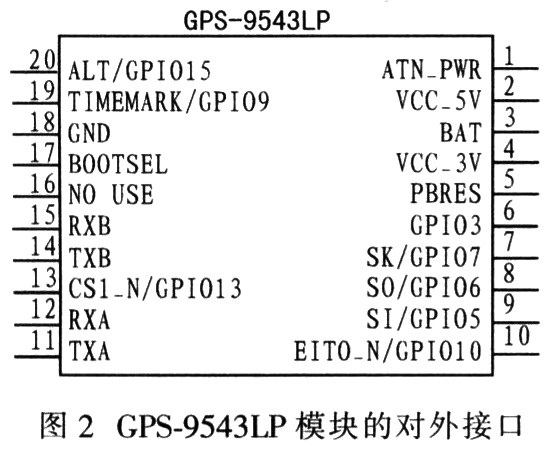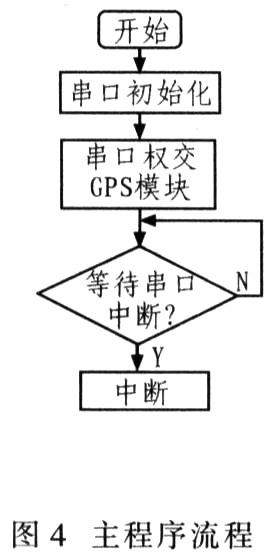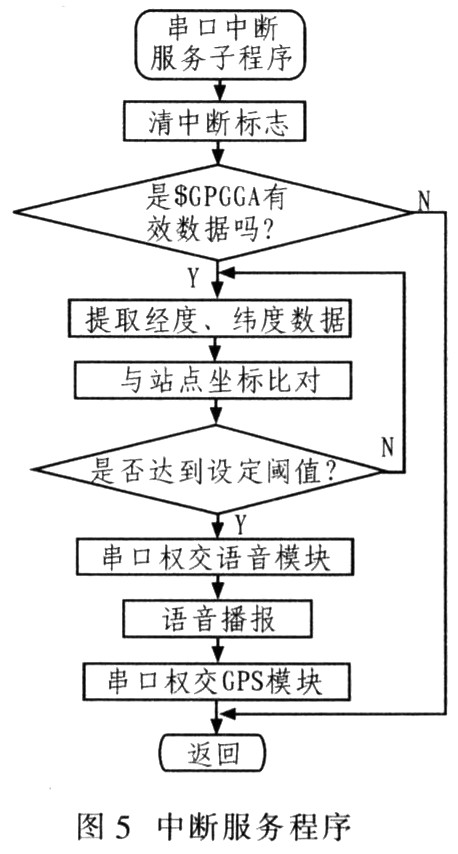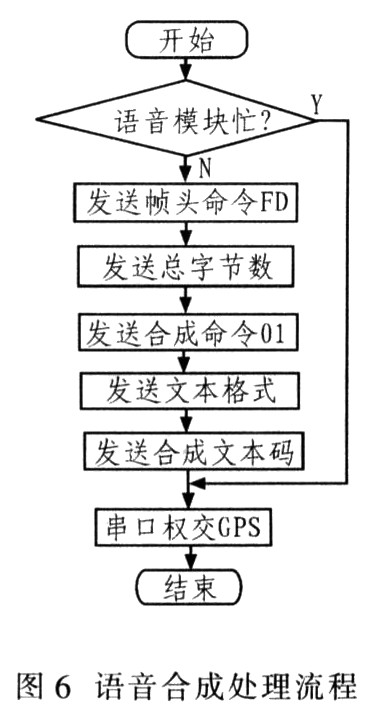1 Introduction At present, the public transportation system of major cities in China basically adopts the computerized station station for manual intervention. First, set up and down lines according to the operation line; while the bus driver is driving, when the station is approaching, press the corresponding station button. When entering the station, due to the large number of people, affecting the driver's work, resulting in missing reports and misreporting stations, affecting the quality of public transport services, and there are great traffic hazards. Therefore, a design scheme of GPS automatic bus language station is proposed here. The scheme adopts GPS global positioning system, and no manual intervention is required. When the vehicle arrives at the station, the voice station can be fully realized.
This article refers to the address: http://
2 Principle of GPS bus station system GPS (Global Positioning System), that is, global satellite positioning system. Each GPS satellite releases its position and time data signals at a time. The user receiver measures the time delay of each satellite signal to the receiver, and calculates the distance of the receiver to different satellites according to the speed of the signal transmission. When at least 4 satellite data are received at the same time, the 3D coordinates, speed and time can be calculated. The GPS receiving module receives the positioning data sent by the GPS satellite, and can obtain the positioning information such as the longitude, the latitude and the corresponding Greenwich time in the GPS signal through a simple string operation. Then, these latitude and longitude information is sent to the single chip processing through the serial port.

Figure 1 shows the principle of the GPS bus intelligent station. The GPS module receives the navigation information sent by the selected satellite and the time of the star clock correction parameter, and calculates the current latitude and longitude coordinate information of the vehicle. By comparing the coordinate information with the latitude and longitude coordinate information of the station stored in the single-chip microcomputer (the threshold can be set), the station station name information can be found and broadcasted by the voice system.
3 system device selection
3.1 GPS positioning module - Leadtek GPS-9543LP
At present, there are many GPS modules on the market. Because the system has no special precision requirements for the GPS module, for the sake of cost, the Leadtek GPS-9543LP positioning module with relatively cheap price is selected. Its positioning accuracy is 10 m, which can meet the design requirements. The Leadtek GPS-9543LP provides a dual-column, 20-pin external interface, as shown in Figure 2. It has two sets of full-duplex asynchronous serial interfaces for easy communication with the microcontroller. Start running after power-on, the basic operation process is as follows:
(1) Self-test starts after self-test and power-on, and the self-test result is reported through the output channel. The process will detect RAM, Flash, receiver, real-time clock and crystal oscillator.
(2) After the initialization self-test is completed, the satellite detection and tracking process will begin. The entire detection process is completely automatic. Under normal circumstances, the GPS-9543LP will acquire positioning information (only 8 s in the known ephemeris) in 45 s, and then transmit valid position, velocity and time information through the output channel.
(3) After the navigation detection is completed, the GPS-9543LP sends effective navigation information through the output channel, including latitude and longitude, altitude, speed, date/time, error estimation, satellite and receiver status.
(4) When the satellite data is collected and operated, the GPS-9543LP will automatically update the satellite orbit data.

The GPS-9543LP uses the NMEA-0183 communication standard format developed by the National Marine Electronics Association. The output data is in ASCII code and contains information such as latitude, longitude, altitude, speed, date, time, heading and satellite status. A $GPGGA output statement consists of 17 fields: statement identifier header, world time, latitude, latitude hemisphere, longitude, longitude hemisphere, positioning quality indication, number of satellites used, horizontal accuracy, altitude, altitude unit, geoid height, Height unit, differential GPS data period, differential reference base station label, checksum end marker (with carriage return < CR> and line feed)
$GPGGA, 114641, 3002.3232, N, 12206.1157, E, 1, 05, 12.9, 53.2, M, 11.6, M, *4A
Indicates that the "$GPGGA" format statement is used. The world (Greenwich) time is 11:46:41, and the position is at 30 degrees 2.323 2 points north latitude. Longitude 122 degrees 6.1157 points, effective positioning, received 5 satellites, the horizontal accuracy of 12.9 m, the antenna from the sea level height of 53.2 m, the location of the ground plane height of 11.6 m, the checksum is 4AH.
The data stream received from the GPS board is a text string, which can be used to parse the useful information according to the structural characteristics of various record statements defined by the GPS output data NMEA-0183 communication standard format. Since each data segment in the frame is separated by a comma, it is generally judged whether it is a frame header by searching for the ASCII code "$" when processing the cached data. After identifying the category of the frame header (GPGGA), it is judged which type of positioning navigation parameter is currently being processed by the number of commas experienced, and corresponding processing is performed.
3.2 Speech Synthesis Module The XF-S4240 speech synthesis module is an embedded Chinese speech synthesis module. The module receives the text to be synthesized through asynchronous serial port (UART), SPI interface and I2C bus, and directly synthesizes it into voice output. The XF-S4240 is powered by a 3.3 V power supply and supports GB2312, GBK, BIG5, and UNICODE text in four internal code formats. It has an intelligent text analysis processing algorithm that correctly identifies and processes the weights and symbols of values, numbers, and time. Strong multi-word processing ability; can be male and female double pronunciation; support software to adjust speech rate, intonation, volume; support a variety of control commands, including: synthesis, stop, pause synthesis, continue to synthesize. The command consists of three parts as shown in Table 1. There are six commands. The details are shown in Table 2 and Table 3.

4 GPS bus intelligent voice report station hardware circuit This system uses the common AT89C52 microcontroller as the controller. The device is inexpensive and has an internal 8 KB EPROM. Both the GPS module and the voice module use asynchronous serial communication mode to communicate with the microcontroller, simplifying hardware connection. Since the AT89C52 has only one serial port, it is necessary to extend the serial port of the AT89C52. The PX and P3.1 of the single-chip microcomputer are used to control the RXD of the GPS and the voice module respectively, and the low level is effective as shown in FIG. Only when a certain control pin is low level, the corresponding module enjoys the power to use the serial port to achieve serial port time division multiplexing.

In the GPS positioning module Leadtek GPS-95431JP, the system is mainly concerned with longitude, latitude, and satellite number information, and only needs to extract the information with a comma as an identifier. Whether the GPS data is valid or not is determined by detecting whether the number of satellites searched can be greater than or equal to 4. If you want to display the time information on the car, you can also extract the real-time time and minute information (the world time is different from Beijing time by 8 h). Since the speech synthesis module supports the text format, as long as the desired synthesized speech Chinese characters (such as "front-to-station", "please prepare for getting off the train", etc.) are converted to GB2312 code, the format of the frame command is required to be transmitted from the single-chip microcomputer to the voice. The module can send data, and it communicates with AT89C51 through a full-duplex asynchronous serial port.

5 system software program design The system uses Keil C structured programming, mainly completed: receiving GPS module data, obtaining latitude and longitude information and voice report station from GPS data. The latitude and longitude information of the site, the station name is stored in an array. The main program mainly completes the serial port initialization and sets the baud rate to 4 800 Kb/s. In the interrupt service program, the read latitude and longitude coordinate information is compared with the stored site coordinates. When the set threshold is reached, the serial port right is handed over to the voice module, and the voice program can be broadcasted, and the serial port is handed over. Go back to the GPS module. For example, if the serial port is handed over to the voice module, it can be implemented by P3=P310x01 and P3=P3&0xfd; likewise, the serial port right is returned to the GPS module. It can be implemented with P3=P310x02 and P3=P3&0xfe statements. The system program flow is shown in Figure 4, Figure 5, and Figure 6.


6 System debugging The whole system consists of the GPS module part and the voice broadcast module part. The two modules are debugged first, and then the joint adjustment is made after the work is normal. The latitude and longitude information of the station should be measured at the left of the station at 50 m (the latitude and longitude information measured by the GPS of the system is displayed on the LCD, and the latitude and longitude display can be made), so that the broadcast information can be started when the bus arrives at the station. . At the same time, because the location of the uplink and downlink sites is close, the station name information is the same. In order to avoid repeating the broadcast of the inbound and outbound stations, the first two of the station name information that should be found after the GPS latitude and longitude information is compared with the site information. The word is compared with the first two words of the station name that was last broadcast, and it is confirmed that the station name is re-broadcast. This enables automatic broadcast without the need to manually set up the uplink and downlink.
7 Conclusion Using AT89C51 single-chip microcomputer, GPS-9543LP global positioning module and XF-S4240 voice synthesis module, the bus voice automatic reporting system is realized. According to the specific requirements of the bus station, the system can continue to improve. The device can completely liberate the driver from the station task and reduce communication risks, so the system design has a good application prospect.
Ammonia Refrigeration Compressor,Refrigeration Compressor
Lanhai Compressor Co., Ltd. , http://www.jhcompressor.com